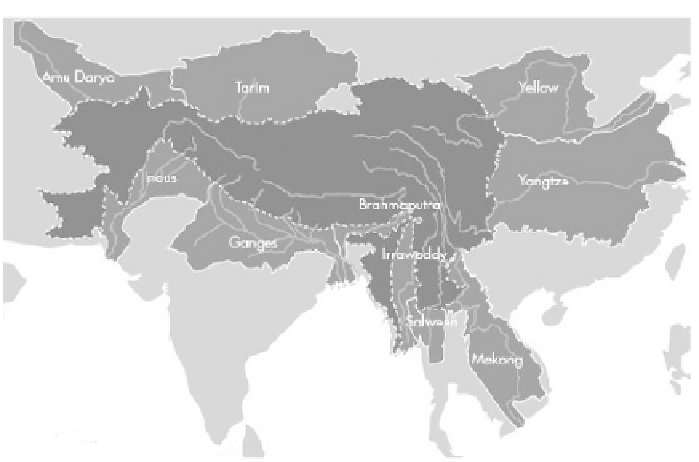Geoscience Reference
In-Depth Information
Figure 13.1
Hindu Kush Himalaya region with major river basins.
Color image of this figure appears in the color plate section at the end of the topic.
balance ecosystems, irrigation schemes, and hydroelectric turbines. A study
(Etienne et al. 2007) has suggested that 915 km
2
of Himalayan glaciers in
the headwaters of the Chenab River, India, thinned by an annual average of
0.85 m between 1990 and 2004. A USAID report (Elizabeth 2010) succinctly
raises the dangers of glacier lake outbursts fl oods (GLOF) caused by
melting “Himalayan/Karakorum glaciers involving large impoundments
by short-lived, unstable debris/ice dams that block tributaries of Indus
river system….causing outburst fl oods.” The tipping mass of glaciers and
the unpredictability in the amount of runoff is causing great concern in
water-dependent sectors, such as agriculture and power generation. Most
Himalayan glaciers are in retreat for three reasons. First the overall warming
tied to carbon emissions. Second, rain and snow patterns are changing, so
that less new snow is added to replace what melts. Third, air pollution by
cook stoves and trucks falling as black carbon or soot on surfaces became
darker and less refl ective—causing them to melt more quickly.
Hindu Kush, Karakorum and Himalaya Rivers System and Glaciers
The tallest and spectacular mountains of the world comprise the mountain
ranges of Hindu Kush, Karakoram and Himalaya. The total area of
valley glaciers in these ranges is approximately 2700 km
2
, 16,600 km
2

Search WWH ::

Custom Search